Sam Buckley’s latest interior design project, Big Ting Café, characterised by a flurry of bold bright colours, dynamic patterns and interesting shapes and forms, is a perfect example of an adaptive reuse project well done. Sitting within a listed building that previously functioned as a Victorian butcher shop, Buckley has now added his characteristic style to the eatery while also being mindful of the heritage value ascribed to the property. The café is located centrally on the Princes Avenue in Kingston upon Hull in England and is dedicated to serving Chinese cuisine. It commands a distinct presence in the neighbourhood on account of its historicity and now, a vibrant makeover.
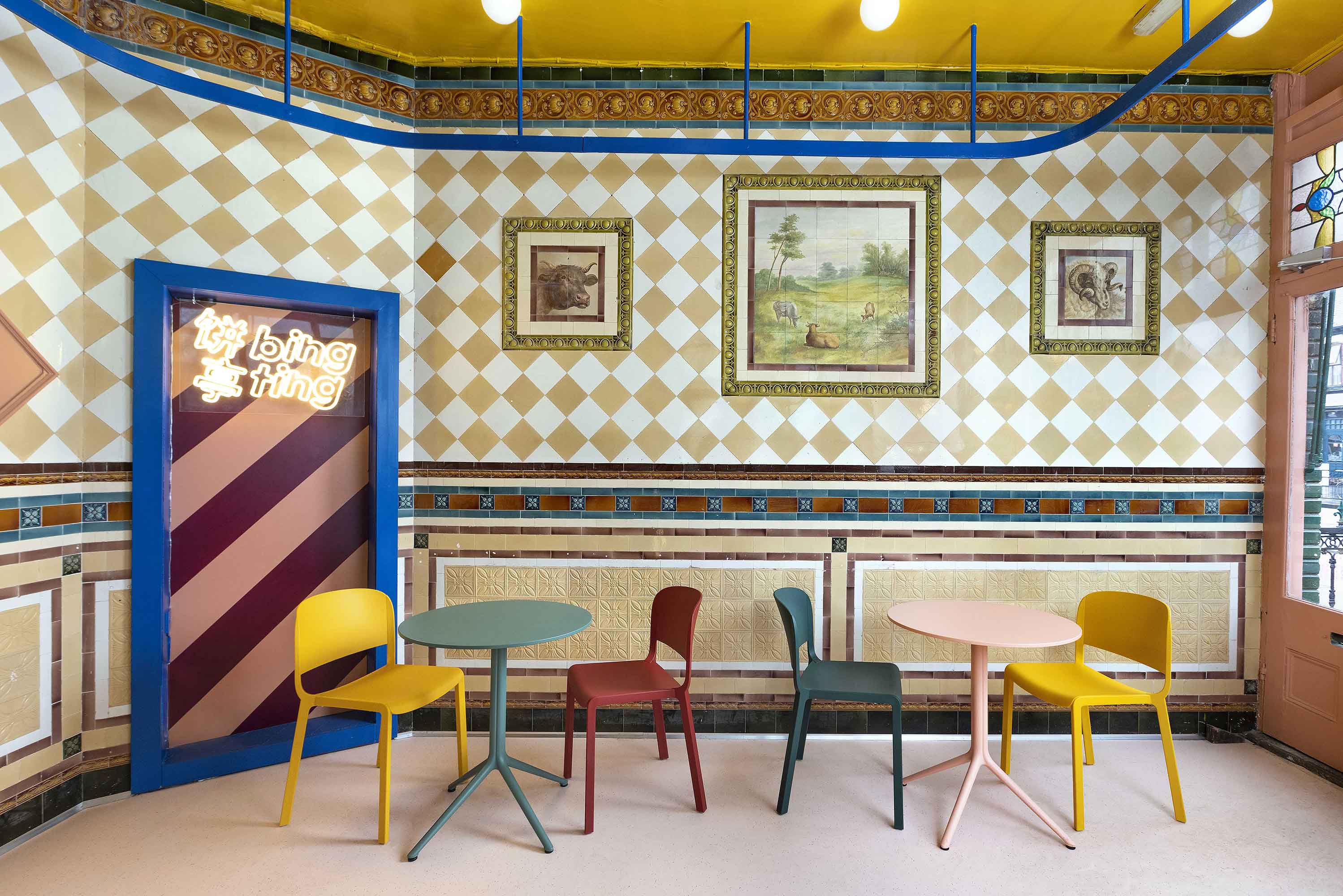
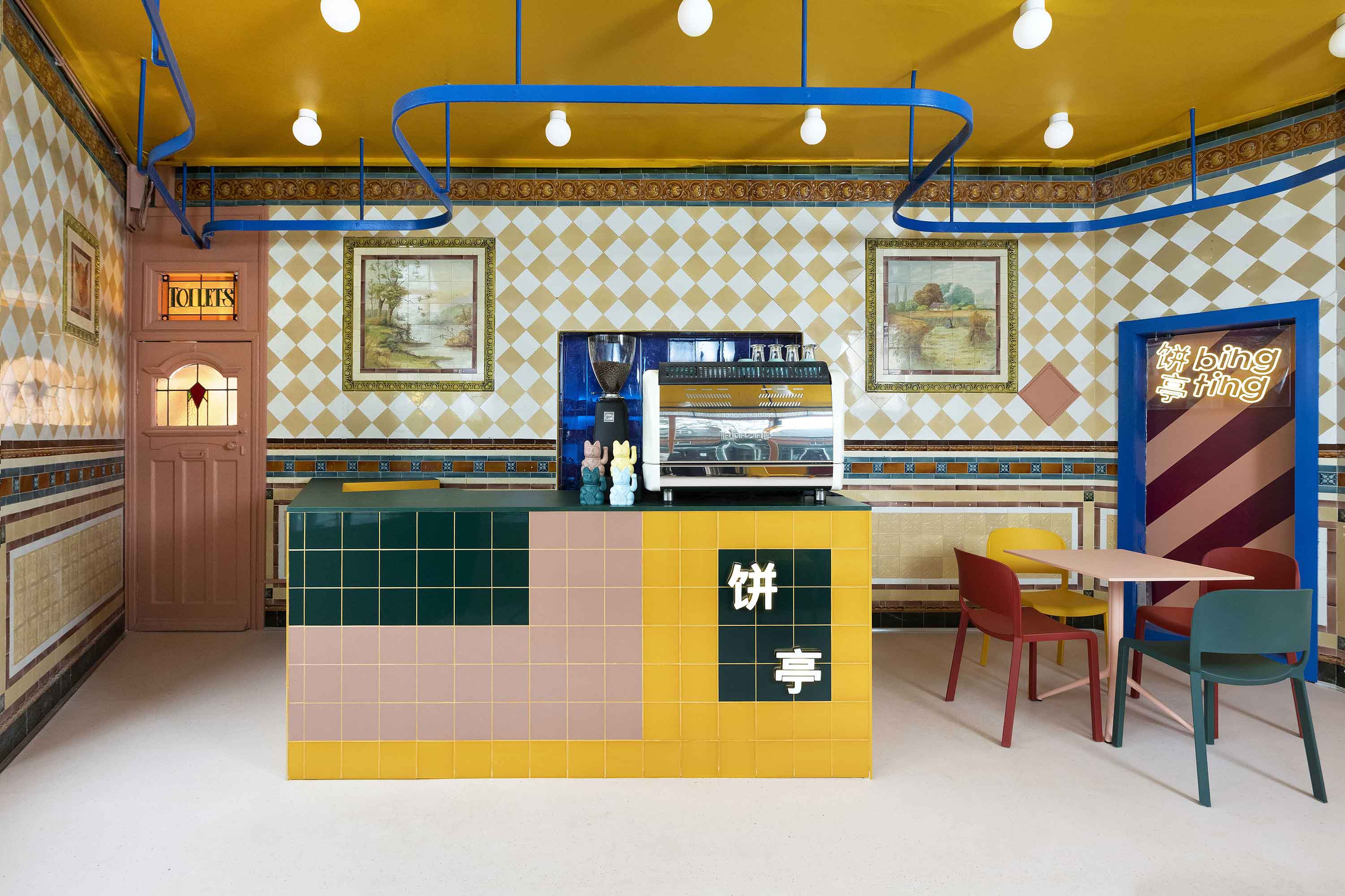
Since the building that houses the Big Ting Café dates back to Victorian times and is a listed heritage structure, the project came with its own challenges. It required the preservation of the original wall and floor tiles. While the chequered wall tiles are still intact and part of the refurbished café, the floors have been covered with an additional layer of off-white Forbo tiles that can be taken out whenever required without leaving any damage on the original tiles. Buckley uses a warm colour palette almost throughout the interior space of the café in order to fit in with the previously installed and preserved tiles on the wall. This unanimity is broken only in parts by the vibrantly coloured furniture pieces or funky fonts that feature within the eatery. The fixtures within the café are also installed away from the floor and ceiling in order to keep them preserved.
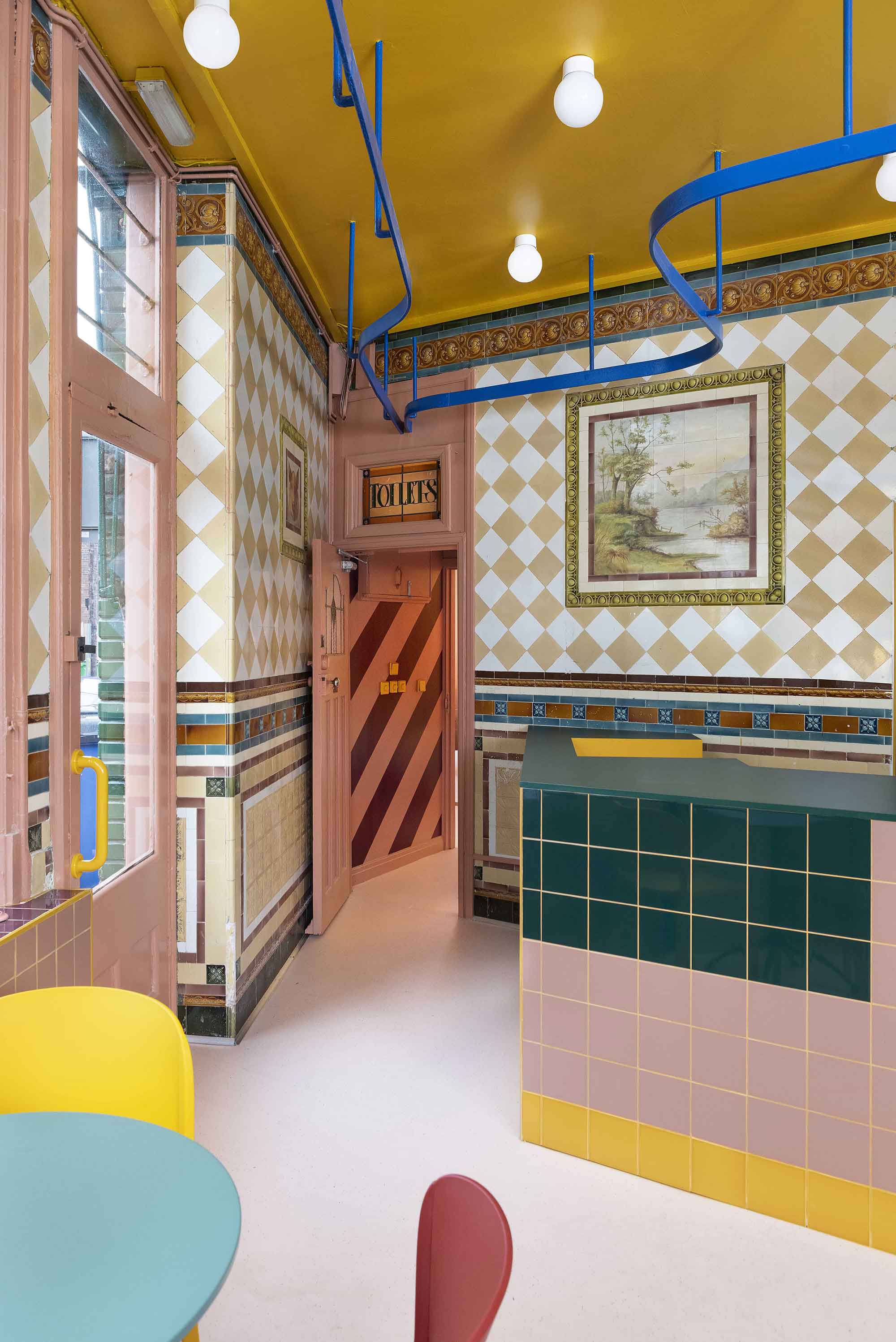
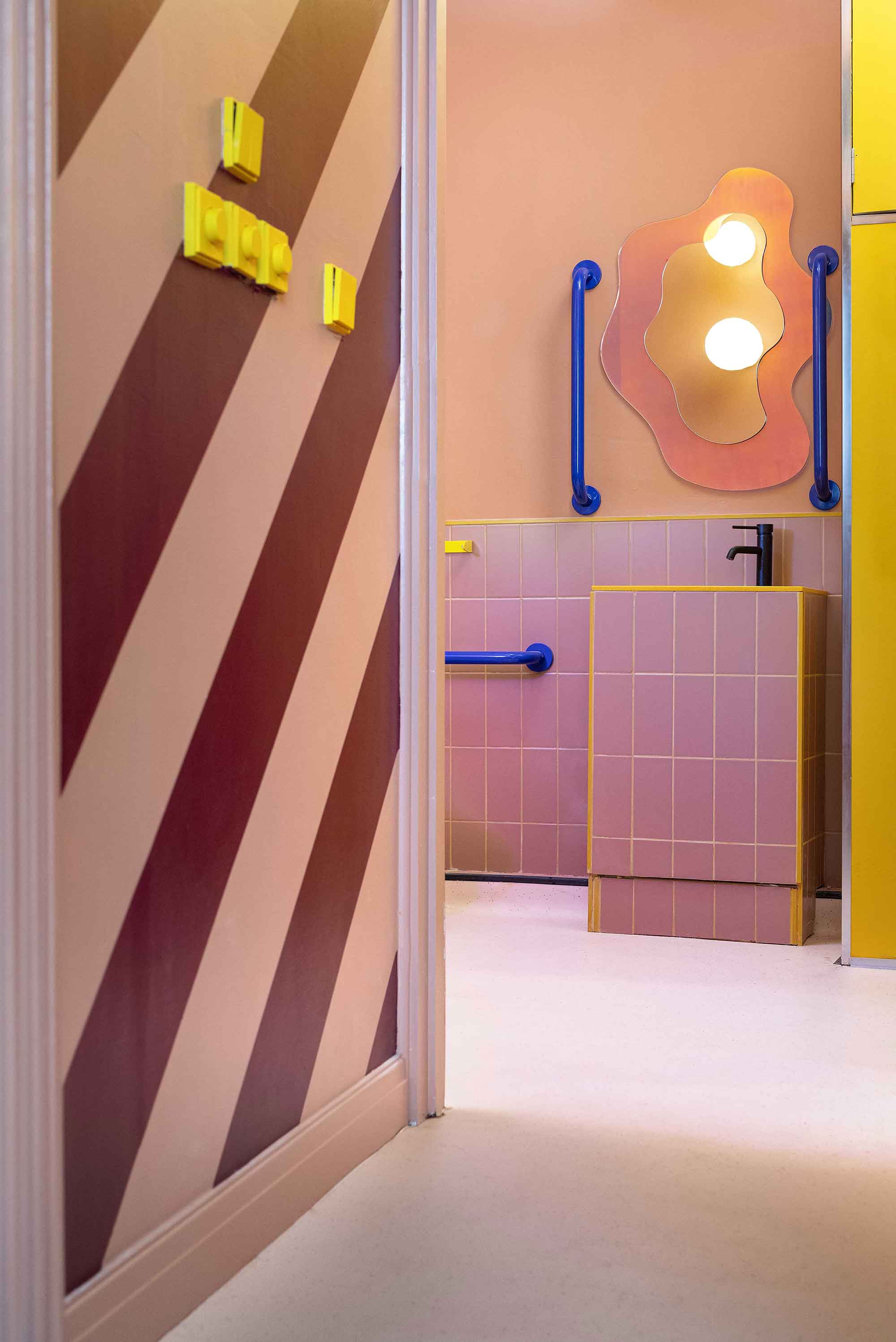
The white flooring effectively neutralises the vibrant colour palette of the café, making it look just the right amount of coloured. The glass windows, offering views to the English bungalows, further bring balance to the space, while also eschewing from making it appear like a small holed-up space. The lighting fixtures against the yellow ceiling, the iron poles juxtaposed near the exterior walls, the blue railing hanging down in a snaking pattern along the circumference of the ceiling and the hanging luminaires comprising elemental shaped objects all add to the charm of the space.
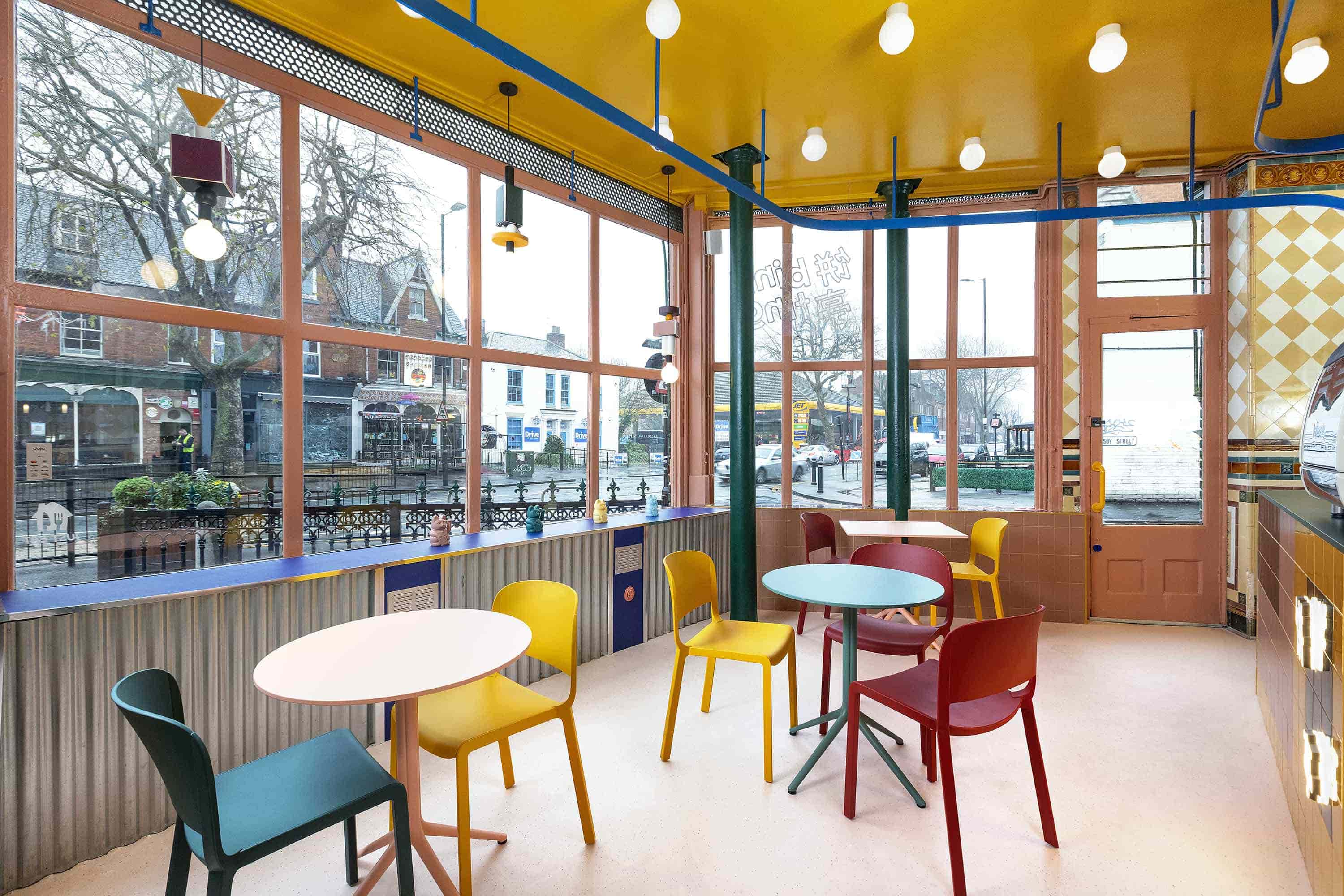
Sam Buckley is a Scottish interior designer and architectural technologist, currently based in Edinburgh. Within his eponymous design firm, he designs both furniture items as well as other ancillary objects and products, while also working on the interior design of both residential and commercial projects. Most of his designs are characterised by a potpourri of colours spreading across all surfaces in unique patterns and forms. Buckley’s intention behind suffusing spaces and objects with the most interesting contrasts is almost a rebellion against minimalistic bland spaces that carry almost no colour. His experimentations with colours and patterns almost always result in the most interesting, vibrant and lively spaces that evade the categorisation of being listed as boring by miles.






 Sign in with email
Sign in with email


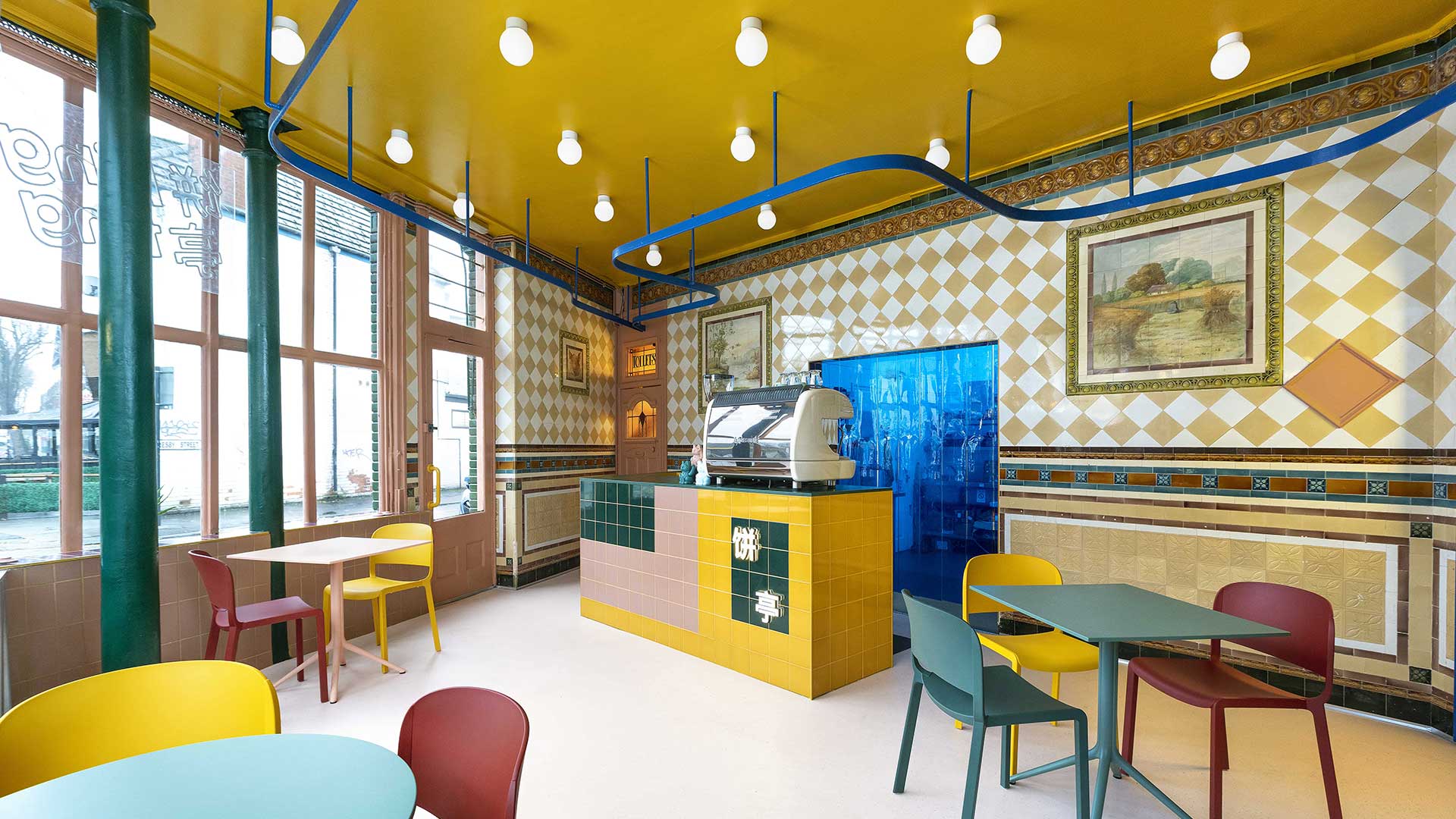
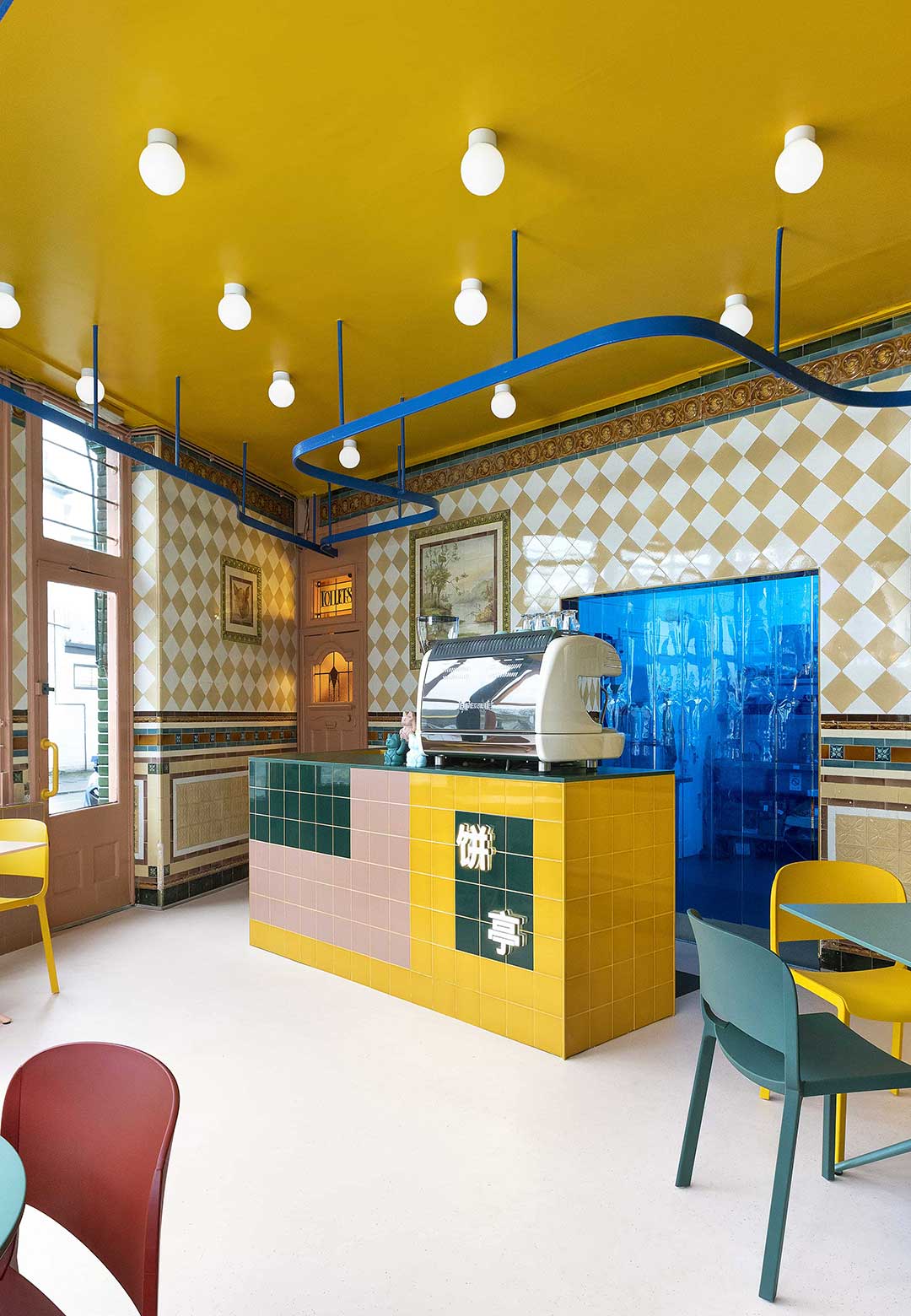






What do you think?